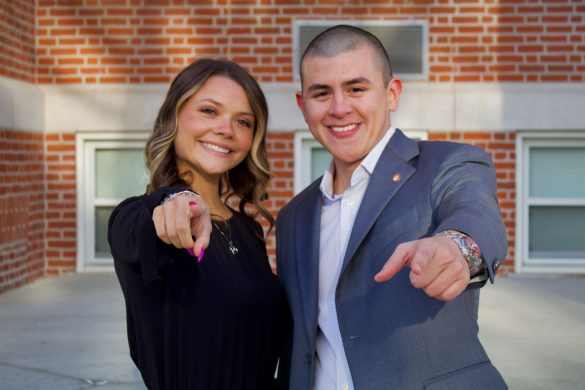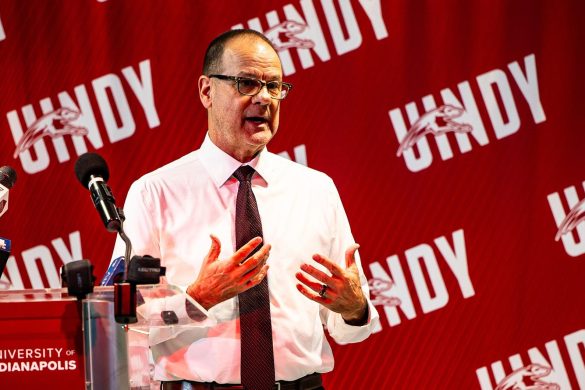In the last two decades, over 7,216 remains have been recovered along the United States-Mexico border, a number experts say is a low estimate of the actual number of deaths that have occurred, according to the Colibri Center. Another 2,816 people remain missing. Yesterday, a vigil for missing and deceased migrants was held at the University of Indianapolis as a part of the International Day of the Disappeared.
“The missing are parents, children, cousins, neighbors, classmates, siblings and friends. Their lives mattered and continue to matter wherever they may be,” human biology graduate student Sidney Thompson said during the vigil. “Today we will honor their memory by standing together to prioritize human rights. We envision a life where dignity is upheld in life and in death and migration is safe for everyone.”

Although some migrants have yet to be found, many have been identified through the volunteer organization Beyond Borders. Every spring, the Beyond Borders forensic science team takes two trips to volunteer their services and help identify migrant bodies. When human remains believed to be migrants are discovered, they are often buried in cemeteries without forensic identification. This is because most communities along the border are impoverished and forensic investigations can be expensive, said Krista Latham, leader of the Beyond Borders forensic team, associate professor of human biology and anthropology and director of UIndy’s Human Identification Center.
Latham and the team exhume the bodies and identify them through DNA samples and skeletal analysis. However, the identification process goes beyond exhuming migrant bodies from graves. It also involves walking the same path that the migrants once did and searching large ranches where migrants may have gone missing. Biology graduate student Alba Craig said the trips are often emotional, but also rewarding because with each body that is identified, one family is getting closure.
“Having personal experience, being at these ranches, finding remains or even just interacting with people who have crossed the border, who have put in their entire life savings, and decided to make this journey without knowing the final destination of their journey, knowing that it’s possible that you can not make it and your family will never know…and you will probably never see your family again,” Craig said. “So having all of that in mind, especially in the extremely harsh conditions, it’s impossible to remove emotion because for that brief moment, those few hours, that year, going along these ranches and searching, you’re literally walking the paths of migrants.”
Hot, humid and dense brush are just some of the harsh conditions that migrants crossing the border may face, Thompson said. They cross in Texas and Arizona where heat can reach upwards of 90 degrees in the spring with little to no shade to help cool them down.

“It’s almost impossible to describe. I had listened and heard from other students who had gone and done the searches and I was like, sounds bad. And then you get there and it’s really bad,” Thompson said. “Everything is sharp. It’s not like walking through a forest where the trees are nice and there’s a breeze. It’s hot and it’s humid. “If there’s tree cover, the trees are very low and…none of it is inviting. If it’s open, it’s sand, which is so hard to move through. We carry a lot and are dressed head to toe, but these people are carrying their entire lives with them and that just makes it even more unimaginable.”
Because of the conditions and the emotional toll that identifying bodies can take, not just anyone can volunteer with Beyond Borders, Latham said. Students need training and must take prerequisite courses to ensure they are well prepared for the trip, both educationally and mentally. However, students can still be involved by raising awareness.
“…We carry a lot and are dressed head to toe, but these people are carrying their entire lives with them and that just makes it even more unimaginable.”
“Education is the most powerful weapon that we have,” Latham said. “I think the more you realize what’s actually happening and the desperate situation and the directness of what’s going on, the more angry students should feel, that people should feel that this is happening. And no, it doesn’t take protests, but it does take awareness and it takes telling other people and educating other people and then you can make the phone calls and then you can start working for change.”








